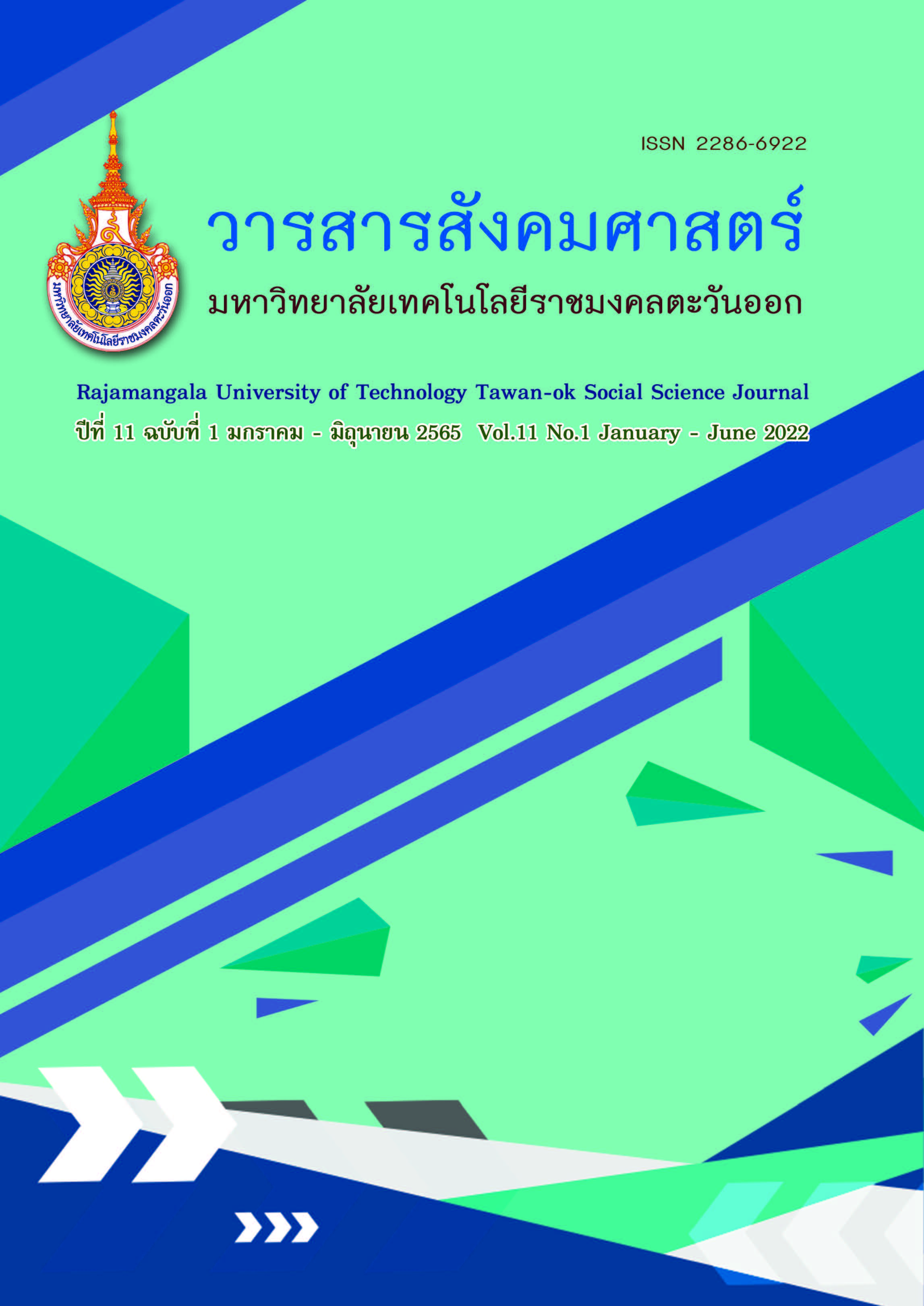Advertising Claims in Smartphone Slogans
Main Article Content
Abstract
This quantitative research examined and compared advertising claims found in slogans of two best-selling smartphone brands from the West and the East within 3 years (2018-2020). Schrank’s advertising claim categorization (2012) was used to be the framework for analyzing the claims found in the studied smartphone slogans. The results were that the advertising claims found in 9 iPhone slogans were 1) the weasel claim (6 times), 2) the unfinished claim (1 time), 3) the “so what” claim (1 time), and 4) the vague claim (1 time); while, the advertising claims found in 25 Samsung smartphone
slogans were 1) the weasel claim (14 times), 2) the unfinished claim (5 times), 3) the “we’re different
and unique” claim (2 times), 4) the vague claim (2 times), 5) the “so what” claim (1 time), and 6) the “compliment the consumer” claim (1 time) respectively. From this, it was also found that advertising claim found in the slogans of Samsung smartphone advertisements outnumbered that of the iPhone slogans; however, this outnumber was from the fewer number of iPhone smartphone released into
the markets. Among all types of the advertising claim, the weasel claim was the most popular one for both iPhone and Samsung smartphone slogans. A remark to be considered is that a slogan and advertising claims are language use reflecting unlimited creativity which can be artistically used to color human communication and to gain benefits in the business world.
Article Details

This work is licensed under a Creative Commons Attribution-NonCommercial-NoDerivatives 4.0 International License.
References
Ariffin, K., Razali, A., Nikman, K., Baharum, N. D., and Wahab, R. A. 2013. The use of weasel words as disclaimers in superiority claims. Gading Business and Management Journal 17(1): 1-17.
Canalys. 2020. Global smartphone market q4 and full year 2019. https://www.canalys.com/newsroom/canalys-global-smartphone-market-q4-2019.
Clow, K. E., and Baack, D. 2001. Integrated advertising, promotion, and marketing communications. England: Pearson Education Limited.
Dyer, G. 1990. Advertising as communication. New York: Routledge.
Elder, R. S., and Krishna, A. 2010. The effects of advertising copy on sensory thoughts and perceived taste. Journal of Consumer Research 36(5): 748-756.
Fitriyah. 2008. Language style in newsweek magazine advertisement.https://core.ac.uk/download/pdf/79435133.pdf.
Kannan, R. and Tyagi, S. 2013. Use of language in advertisements. English for Specific Purposes World, 13(37).
Ketamon, T. 2013. A Study of the Advertising Claims of Seven Hair Products Co-Creators: Quotes in Sunsilk’s Advertising. http://fs.libarts.psu.ac.th/research/conference/proceedings-7/1/1.12 Online%20Language%20of%20Persuasion%20A%20Case%20Study%20.pdf.
Kohli, C., Leuthesser, L., and Suri, R. 2007. Got slogan? Guidelines for creating effective slogans. Business Horizons 50(5): 415-422.
Leech, N. G. 1966. English in advertising: A linguistic study of advertising in great britain. London: Longmans, Green & Co. Ltd.
MarketUs. 2020. Smartphone brands statistics and facts. https://market.us/statistics/smartphone-brands.
Ngam-ek, R. 2001. Level of claims and advertising effectiveness. https://dric.nrct.go.th/Search/SearchDetail/118884.
O’Guinn, T. C., Allen, C. T., and Semenik, R. J. 2009. Advertising and integrated brand promotion. USA.: South-Westhern Cengage Learning.
Pornsuriya, P. 2018. The relationship between advertising claims, believability, and purchase intention in advertisement on food, and supplement products appearing in women’s health magazine. http://digital_collect.lib. buu.ac.th/dcms/files/57910191.pdf.
Schrank, J. 1976. The language of advertising claims: In teaching about doublespeak. Illinois: NCTE.
Schrank, J. 2012. The language of advertising claims. http://home.olemiss.edu/~egjbp/comp/ad-claims.html.
Sells, P. and Gonzalez, S. 2008. The language of advertising. https://www.stanford.edu.
Statista. 2020. Online advertising revenue in the United States from 2000 to 2020. https://www.statista.com/statistics/183816/us-online-advertising-revenue-since-2000.
Statista. 2020. Number of smartphone users worldwide from 2016 to 2023. https://www.statista.com /statistics/330695/number-of-smartphone-users-worldwide.
Vidaković, M. M. and Janjić, Z. D. T. 2017. Weasel Claims in Advertisements in English and Serbian. https://www.researchgate.net/publication/341187973.
Widyahening, C. E. T., and Hum, M. 2015. The role of language in advertisement. https://media.neliti.com /media/publications/169682-EN-the-role-of-language-in-advertisement.pdf.
Zuhair, A. 2018. Language use in advertising: Creativity and its dimensions. http://www.languageinindia.com /feb2018/zuhairadvertisinglanguage.pdf.


